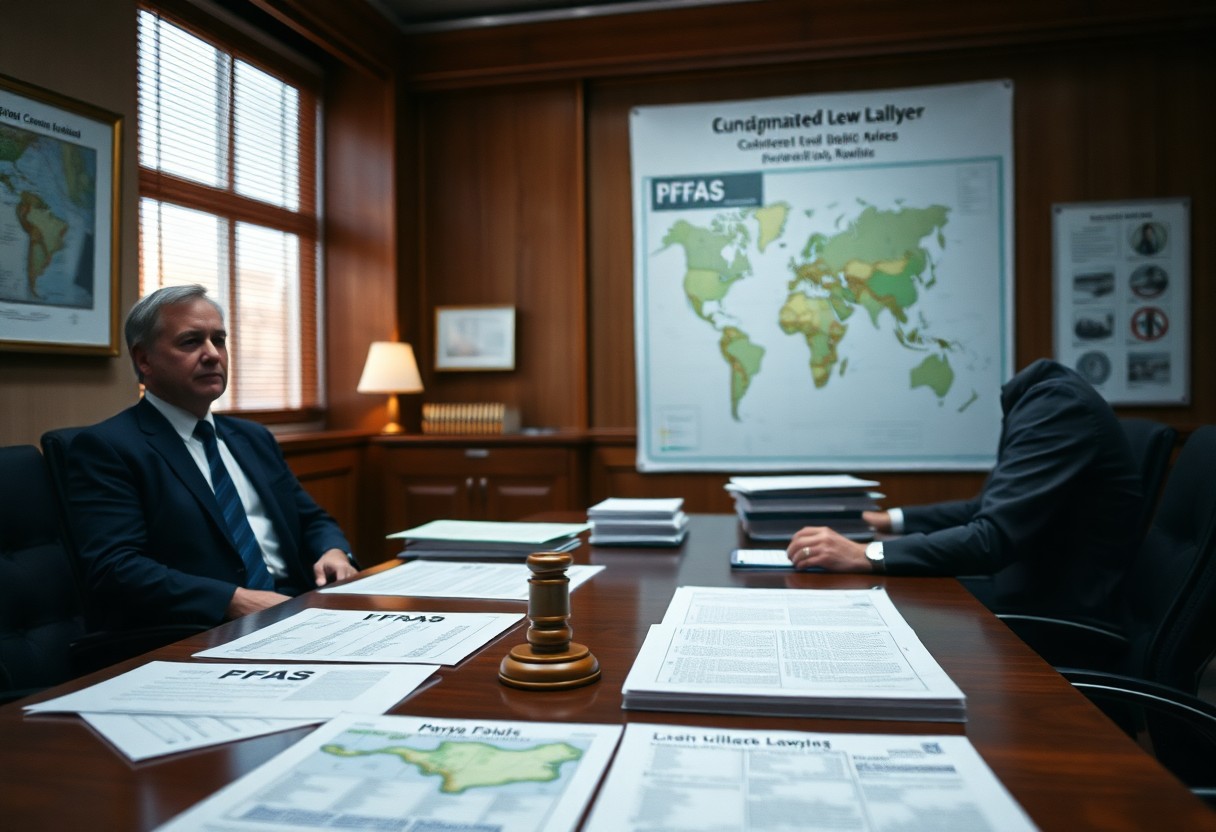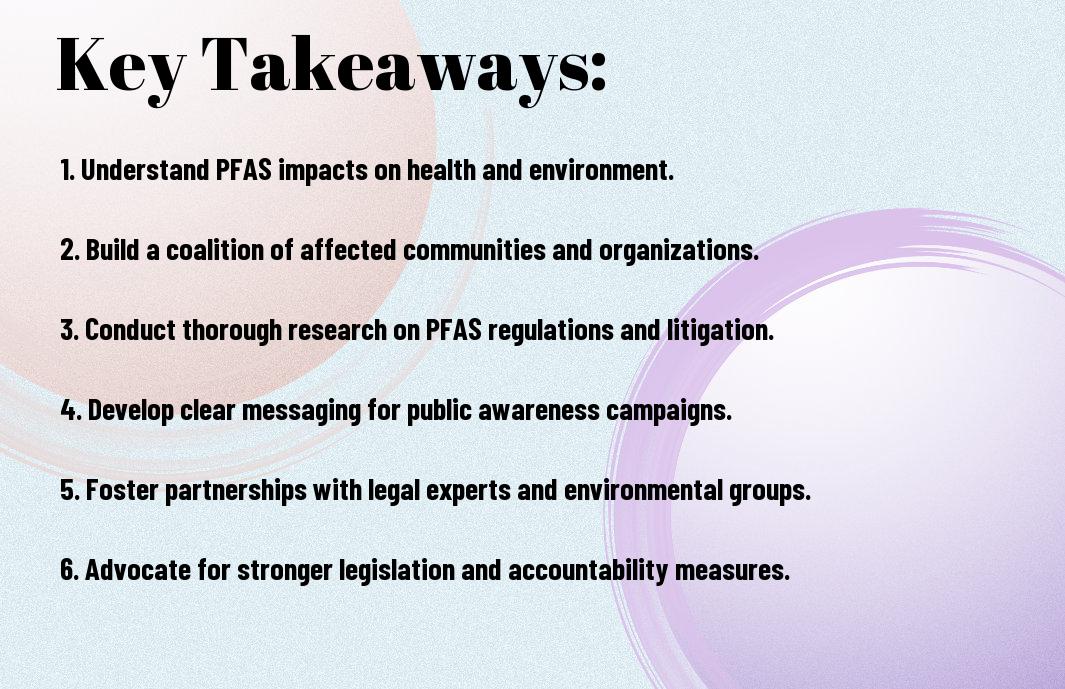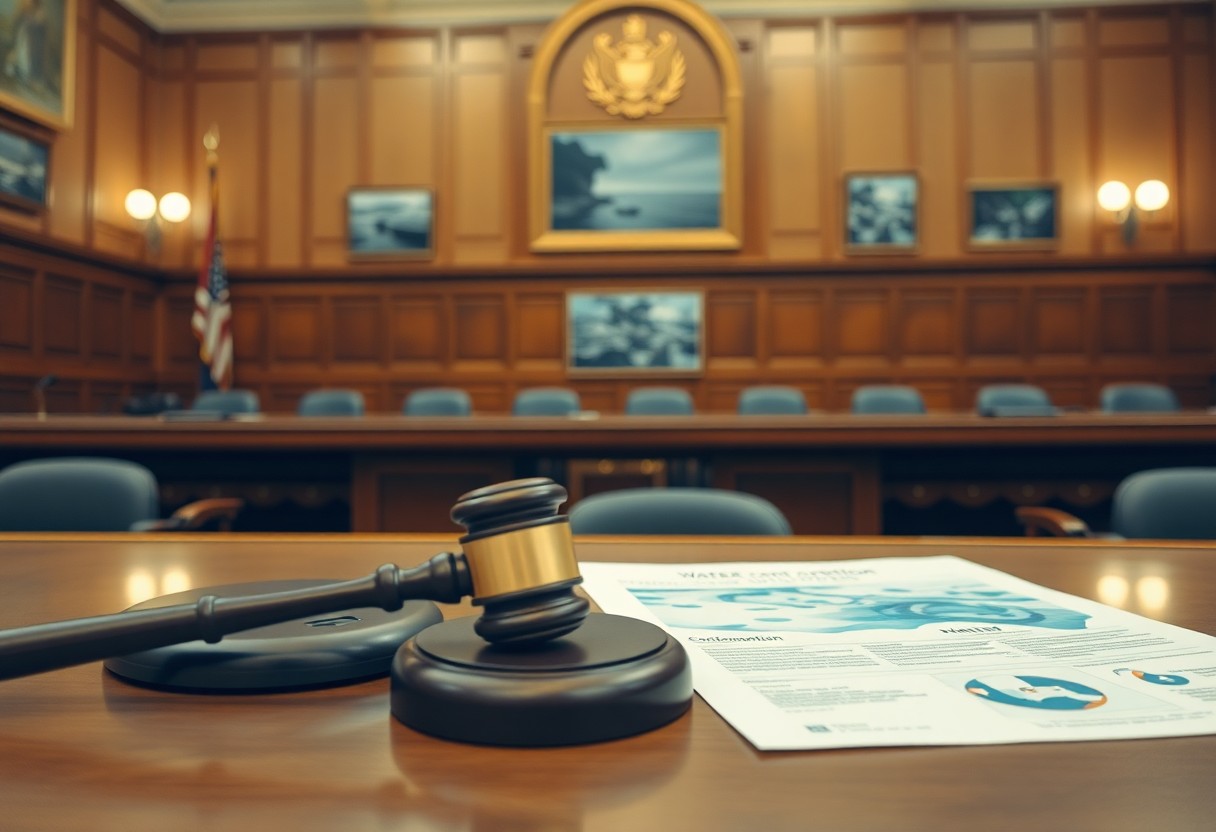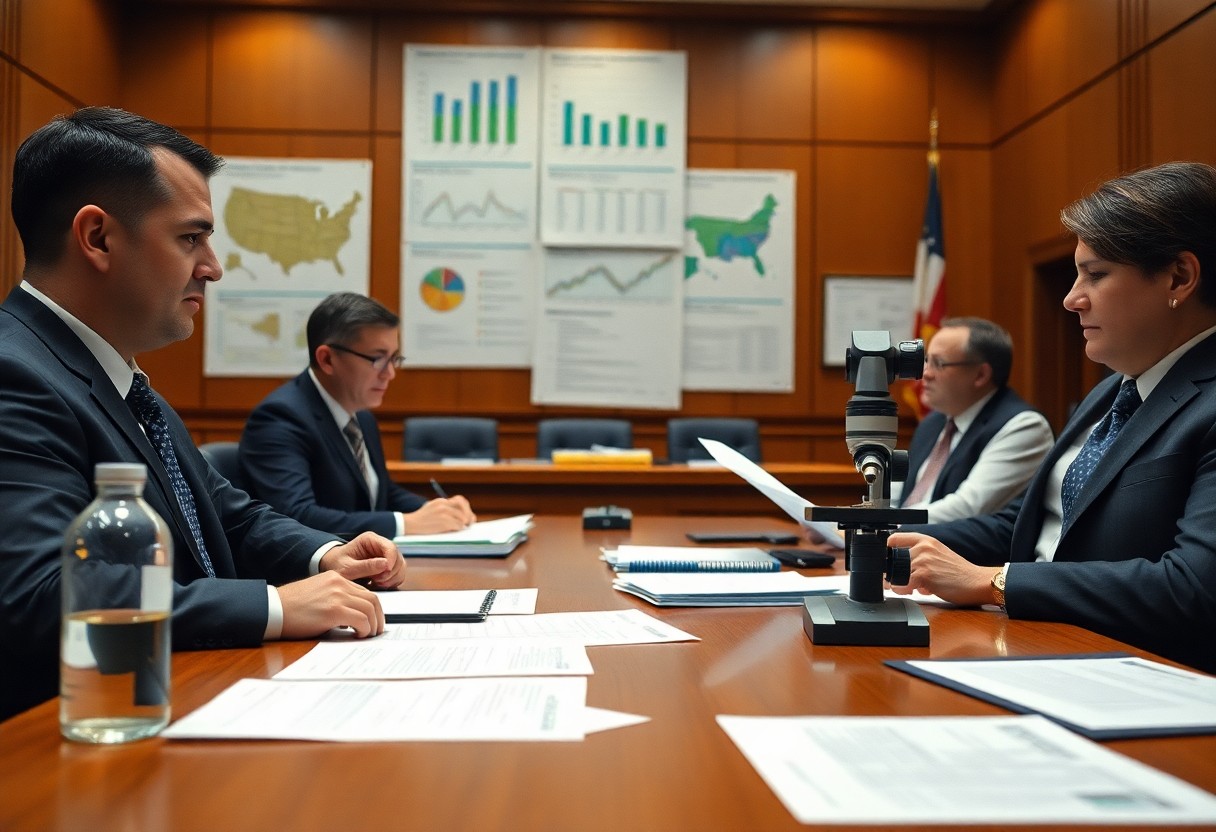Most advocates and concerned citizens recognize the urgent need to address the pervasive issue of PFAS (per- and polyfluoroalkyl substances) in our environment. As you engage in this effort, it is necessary to implement strategic steps that will enhance your advocacy impact in PFAS-related lawsuits. This blog post outlines eight actionable strategies, equipping you with the knowledge and tools you need to navigate the complexities of environmental advocacy effectively. By following these steps, you can contribute to the fight for environmental justice and the protection of public health.
Understanding PFAS: Risks and Regulations
As an environmental advocate, understanding PFAS (per- and polyfluoroalkyl substances) is vital for effectively addressing the associated risks and regulatory framework. These synthetic chemicals are prevalent in various consumer products due to their water- and grease-resistant properties. Their persistence in the environment, combined with potential health risks, underscores the importance of engaging in advocacy efforts to hold responsible parties accountable.
Definition and Impact of PFAS
After being introduced in numerous industrial and consumer products, PFAS have garnered significant attention due to their potential health impacts. These substances can accumulate in the human body, leading to various health issues, including reproductive harm, immune system dysfunction, and cancer. Understanding the implications of PFAS exposure will help you advocate for more stringent regulatory measures.
Current Regulatory Landscape
Landscape changes surrounding the regulation of PFAS are rapidly evolving as more research reveals their hazards. You should be aware that both federal and state governments are beginning to implement stricter guidelines and monitoring systems. Agencies like the Environmental Protection Agency (EPA) have issued health advisories, but regulatory measures are still inconsistent across states, making it vital for you to stay informed about your local laws and initiatives.
With the increasing awareness of PFAS risks, various states have begun enacting laws aimed at limiting their use and mandating testing in public water systems. At the federal level, the EPA has signaled intentions to develop comprehensive regulations for PFAS, but actual implementation remains a work in progress. By understanding these ongoing developments, you can enhance your advocacy strategy and ensure you are effectively addressing PFAS-related concerns within your community.
Building a Coalition for Advocacy
One of the most effective strategies for environmental advocacy in PFAS lawsuits is to build a coalition that unites diverse stakeholders around a common goal. By gathering individuals and organizations with shared interests, you can amplify your message and strengthen your case against PFAS contamination. This coalition will not only enhance visibility but also mobilize resources, making your advocacy efforts more impactful.
Identifying Stakeholders
One necessary step in building a coalition is identifying stakeholders who are directly affected by PFAS contamination. This includes community members, environmental groups, health organizations, and local businesses. By mapping out these connections, you can pinpoint those whose voices should be included in your advocacy efforts, ensuring a comprehensive and diverse representation of concerns.
Engaging Community Partners
Before you can impact change, it is vital to engage community partners who share your passion for addressing PFAS issues. Building relationships with local organizations, activists, and advocacy groups can enhance your efforts by providing insights and resources that are necessary for effective advocacy. Community partners can offer platforms for your message, helping it resonate with a broader audience.
Hence, when navigating community partnerships, focus on establishing trust and open communication. Collaborate on shared goals and encourage active participation from your partners to create an inclusive environment. By fostering these relationships, you not only expand your reach but also cultivate a robust network of support that can significantly elevate your advocacy in PFAS lawsuits.
Crafting a Strategic Advocacy Plan
Even the most passionate environmental advocates must have a well-defined strategy to drive their initiatives forward. By crafting a strategic advocacy plan, you ensure that your efforts are coherent and effective in addressing PFAS-related issues. This plan should encompass your goals, target audience, key messages, and methods of outreach, enabling you to engage stakeholders and influence policy effectively. With a robust framework in place, you can streamline your advocacy efforts, making them more impactful as you navigate the complexities of PFAS lawsuits.
Setting Clear Objectives
After you establish your strategic advocacy plan, it’s crucial to set clear objectives that guide your initiatives. These objectives should be specific, measurable, achievable, relevant, and time-bound (SMART). By establishing concrete goals, you can better assess your progress, make adjustments as needed, and demonstrate the effectiveness of your advocacy efforts to stakeholders and potential supporters.
Developing Messaging and Outreach Strategies
Strategies for effective messaging and outreach are vital for communicating the urgency and importance of PFAS advocacy. Tailoring your message to resonate with diverse audiences allows you to build broader support. Utilize various platforms—social media, community events, or public forums—to disseminate your messages. Collaborating with other organizations can also enhance your reach and provide additional credibility to your advocacy efforts.
Outreach activities should focus on making your message relatable and understandable. Engage with your audience by sharing personal stories and testimonials that highlight the real-life impacts of PFAS contamination. Utilize visuals, infographics, and interactive content to engage people emotionally and intellectually. This multifaceted approach not only raises awareness about PFAS issues but also fosters a sense of community among advocates, stakeholders, and the public, driving collective action toward meaningful change.

Leveraging Scientific Research and Data
Not only does scientific research provide a solid foundation for your PFAS advocacy efforts, but it also strengthens your credibility in legal challenges. Utilizing this data empowers you to make informed decisions and craft compelling arguments that resonate with both the public and the legal system. By focusing on reliable studies and findings, you position your advocacy as evidence-based, thus enhancing your chances of achieving favorable outcomes in lawsuits.
Importance of Scientific Evidence
Below is a key aspect of your advocacy efforts. Scientific evidence helps establish a clear connection between PFAS exposure and adverse health effects. By presenting solid data, you can demonstrate the need for regulatory actions or legal remedies, providing a persuasive narrative that can influence public opinion and judicial outcomes.
Collaborating with Experts
Below, fostering partnerships with experts in toxicology, environmental science, and public health can significantly enhance your advocacy efforts. These professionals offer valuable insights and data that can support your legal arguments, ensuring they are firmly grounded in scientific research.
In fact, collaborating with experts allows you to access the latest studies and expertise that may not be within your grasp. By involving scientists and researchers, you can obtain accurate data on PFAS toxicity and exposure levels, which can be pivotal for your case. Moreover, these experts can testify on your behalf, lending authoritative voices to support your claims and increasing the chances of your advocacy resonating within both the court and broader community.
Legal Framework and Strategic Litigation
Now that you understand the context of PFAS and their environmental impact, it’s imperative to examine into the legal framework surrounding these lawsuits. Engaging in strategic litigation requires a comprehensive understanding of relevant statutes, regulatory standards, and case law that can influence your advocacy. By leveraging existing laws and scientific evidence, you can effectively navigate the complexities of the legal landscape to support your claims and enhance the chances of holding responsible parties accountable.
Overview of PFAS Lawsuits
Legal actions concerning PFAS often involve both state and federal regulations, as these chemicals have been linked to serious health risks and environmental degradation. Various lawsuits have emerged, targeting manufacturers and suppliers of PFAS, alleging negligence and failure to warn consumers about the dangers. These cases continue to evolve as more evidence surfaces, and the legal landscape shifts accordingly.
Strategies for Effective Litigation
With a strategic approach, you can amplify your impact during litigation. Engage in thorough research to compile evidence, utilize expert testimonies, and establish a clear narrative that underscores the harmful effects of PFAS. Collaborative efforts with other affected parties or advocacy groups can strengthen your case by pooling resources and sharing knowledge. Furthermore, staying informed about ongoing regulatory changes can help you adapt your strategies to maintain momentum in your litigation efforts.
Considering the multifaceted nature of PFAS litigation, it is important to employ a combination of techniques. Establish strong partnerships with environmental organizations, legal experts, and public health advocates. Utilize scientific studies that highlight the environmental and health ramifications of PFAS exposure to build a compelling argument. Additionally, public outreach and media attention can play a vital role in raising awareness, further supporting your case as it demonstrates societal concern over the issue. This holistic approach can lead to more favorable outcomes in your lawsuits against PFAS manufacturers.
Engaging with Policymakers
After identifying the key players in the legislative process, you need to actively engage with policymakers who hold the power to influence PFAS-related laws. Attend public meetings, submit written testimonies, or schedule one-on-one meetings to communicate your concerns and advocate for the necessary changes. Building a relationship of trust and understanding with those in power can heighten your influence and foster a collaborative environment focused on environmental protection.
Building Relationships with Legislators
For effective advocacy, your first step is to build genuine relationships with your legislators. Attend their town halls, engage in discussions, and share your experiences and concerns about PFAS pollution. By establishing rapport, you’re not just a voice in the crowd; you become a valued resource for them when forming policy. This connection can lead to more impactful dialogues and a better understanding of the community’s needs.
Influencing Policy through Effective Communication
Any effort to influence policy hinges on your ability to communicate effectively with decision-makers. Providing clear, data-driven arguments accompanied by personal stories helps make the issue relatable and urgent.
It is necessary to tailor your message to resonate with individual policymakers. Use concrete examples that illustrate the impact of PFAS on local communities and public health. Facilitate discussions that ensure your concerns are heard, and back them with credible research, statistics, and testimonies. By crafting a compelling narrative, you can enhance your advocacy, encouraging lawmakers to prioritize and address PFAS contamination in their policies and initiatives.

Summing up
With this in mind, implementing the 8 strategic steps for environmental advocacy in PFAS lawsuits empowers you to effectively navigate the complexities surrounding these contamination issues. By leveraging education, building coalitions, engaging in policy advocacy, and utilizing legal strategies, you can make a significant impact in promoting accountability and protecting public health. Your proactive involvement in these steps not only strengthens the movement against PFAS contamination but also fosters a more sustainable future for all communities affected.


















